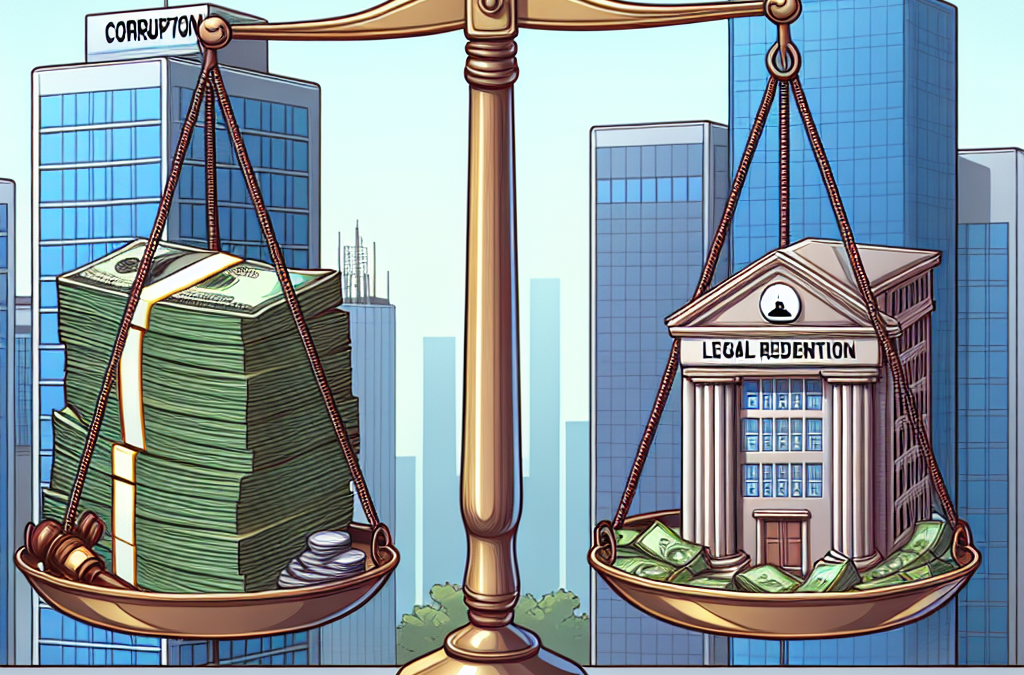“Siemens: Navigating the Price of Integrity, From Scandal to Standards”
Introduction
Siemens AG, a global powerhouse in electronics and electrical engineering, operates in the industry, energy, and healthcare sectors. Founded in 1847 by Werner von Siemens, the company has grown to become one of the world’s largest providers of innovative technologies, with operations spanning across 190 countries. However, Siemens’ reputation was severely tarnished by a corruption scandal that came to light in 2006. The scandal involved widespread bribery and corruption, where the company was accused of using slush funds to win contracts around the world.
The cost of this corruption was not only financial but also reputational. Siemens faced legal actions that resulted in fines and penalties amounting to over $1.6 billion, one of the largest corruption fines in history. The company underwent a significant transformation in response to the scandal, implementing rigorous compliance systems and internal controls to prevent future misconduct. This saga of legal redemption is a testament to the company’s commitment to ethical business practices and the importance of corporate integrity. The Siemens case has since been used as a benchmark for compliance standards and anti-corruption measures globally.
Siemens’ Journey Through Scandal: The High Price of Corruption
Siemens and the Cost of Corruption: A Saga of Legal Redemption
The tale of Siemens AG, one of the world’s largest engineering and electronics conglomerates, is a stark reminder of the pervasive threat of corporate corruption and the arduous path to redemption. The German powerhouse, with its global footprint, found itself embroiled in one of the most significant corruption scandals in history, a saga that would cost the company dearly, both in financial terms and reputational damage.
At the heart of the scandal was a slush fund system that Siemens had allegedly used to bribe officials and secure contracts around the globe. The revelations, which surfaced in 2006, pointed to a culture of corruption that had been ingrained in the company’s operations for decades. The scale of the misconduct was staggering, with an estimated $1.4 billion in bribes paid across various countries.
The legal ramifications for Siemens were swift and severe. The company faced investigations by multiple authorities, including the U.S. Department of Justice (DOJ) and the Securities and Exchange Commission (SEC), as well as German prosecutors. The complexity of the case was amplified by the multinational nature of the offenses, which spanned several jurisdictions, each with its own legal framework and enforcement mechanisms.
In the face of these challenges, Siemens embarked on a rigorous journey of legal redemption. The company’s response was multifaceted, involving sweeping internal changes and cooperation with authorities. Siemens agreed to a series of settlements that reflected the gravity of its misconduct. In 2008, the company pled guilty to violations of the U.S. Foreign Corrupt Practices Act (FCPA) and agreed to pay fines and disgorgements totaling $1.6 billion, one of the largest penalties ever levied for FCPA violations.
Moreover, Siemens undertook a comprehensive overhaul of its corporate governance and compliance systems. The company appointed an independent monitor to oversee its reforms and ensure adherence to ethical business practices. Siemens’ efforts to rehabilitate its image and operations were extensive, involving the dismissal of employees involved in the scandal, the establishment of new compliance protocols, and the implementation of rigorous training programs for its workforce.
The cost of corruption for Siemens extended beyond the financial penalties. The scandal tarnished the company’s reputation, leading to a loss of trust among investors, customers, and the public. It took years for Siemens to rebuild its image and regain its standing as a leader in ethical business conduct.
The Siemens saga serves as a cautionary tale for corporations worldwide. It underscores the importance of robust compliance systems and the need for a corporate culture that prioritizes integrity and transparency. The high price of corruption is not merely measured in monetary terms but also in the erosion of stakeholder confidence and the long-term sustainability of a business.
In the years following the scandal, Siemens has emerged as a vocal advocate for anti-corruption measures, often sharing its experiences to help other companies navigate the complexities of compliance and ethics. The company’s journey through scandal to legal redemption is a testament to the fact that while the road to recovery can be long and fraught with challenges, it is possible for even the largest of corporations to course-correct and emerge stronger, with a renewed commitment to lawful and ethical business practices.
The Legal Reckoning: Siemens’ Path to Redemption Post-Corruption

Siemens and the Cost of Corruption: A Saga of Legal Redemption
The tale of Siemens AG, Europe’s largest industrial manufacturing company, is a stark reminder of the pervasive threat of corporate corruption and the arduous journey towards legal redemption. The German conglomerate, with its global footprint, found itself embroiled in one of the biggest corporate scandals of the 21st century, a scandal that would ultimately reshape its corporate culture and redefine international business ethics.
In 2008, Siemens faced allegations that shook its foundation to the core. The company was accused of engaging in a systematic practice of bribery and corruption, involving slush funds, kickbacks, and shady dealings to secure contracts in various countries around the world. The revelations came as a shock to the international community, tarnishing the reputation of a corporation known for its engineering excellence and innovation.
The legal ramifications were immediate and severe. Siemens was subjected to intense scrutiny by the U.S. Department of Justice (DOJ) and the Securities and Exchange Commission (SEC), as well as by German authorities. The investigations revealed that Siemens had violated the Foreign Corrupt Practices Act (FCPA), a U.S. law that prohibits companies from bribing foreign officials to obtain or retain business. Consequently, Siemens agreed to a settlement that was unprecedented in its scale: the company would pay a combined total of $1.6 billion in fines and penalties to U.S. and German authorities, the largest fine ever levied for FCPA violations at the time.
However, the financial penalties were just the beginning of Siemens’ path to redemption. Recognizing the need for drastic change, the company embarked on a comprehensive overhaul of its corporate governance and compliance systems. Siemens committed itself to fostering a culture of integrity and transparency, implementing rigorous internal controls and adopting a zero-tolerance policy towards corruption.
The transformation was both profound and costly. Siemens invested over a billion dollars in training and compliance measures, establishing new procedures to ensure ethical conduct and compliance with anti-corruption laws. The company also made sweeping changes to its leadership, with a significant turnover in its executive ranks, signaling a clear break from past practices.
Moreover, Siemens’ efforts extended beyond internal reforms. The company became an advocate for anti-corruption initiatives, working with international organizations to promote business ethics and compliance standards across industries. By taking a leadership role in the fight against corruption, Siemens sought to restore trust with its stakeholders and set a new benchmark for corporate responsibility.
The legal reckoning that Siemens faced was a painful but necessary step in its evolution. The company’s willingness to confront its shortcomings, accept responsibility, and make amends was instrumental in its journey towards redemption. Today, Siemens is often cited as a case study in corporate turnaround, demonstrating how a company can recover from the brink of disaster through commitment to ethical practices and legal compliance.
In conclusion, Siemens’ saga is a testament to the fact that the cost of corruption can be immense, but it also highlights the potential for redemption through concerted legal and ethical reform. The company’s experience serves as a cautionary tale for other corporations, emphasizing the importance of maintaining a robust compliance framework to prevent corruption and the value of taking decisive action to rectify wrongdoing. Siemens’ journey from scandal to redemption underscores the enduring principle that integrity is the cornerstone of sustainable business success.
From Bribery to Integrity: Siemens’ Transformation and Compliance Overhaul
Siemens and the Cost of Corruption: A Saga of Legal Redemption
The tale of Siemens AG, one of the world’s largest engineering and electronics conglomerates, is a stark reminder of the pervasive threat of corporate corruption and the arduous journey towards redemption. Once embroiled in a scandal that shook the very foundations of its century-old legacy, Siemens has since emerged as a paragon of corporate integrity and compliance.
The scandal that came to light in 2006 was staggering in its scope and scale. Siemens was accused of running a slush fund exceeding $1.4 billion, used to bribe officials and win contracts around the globe. This revelation sent shockwaves through the international business community, as it exposed a culture of corruption deeply ingrained within the company’s operations. The subsequent investigations by German and U.S. authorities led to Siemens paying a then-record sum of $1.6 billion in fines and penalties, marking one of the largest corporate bribery settlements in history.
However, the financial repercussions were just the beginning. The scandal tarnished Siemens’ reputation, leading to a loss of trust among investors, customers, and the public. It became evident that for Siemens to recover and thrive, a comprehensive overhaul of its corporate culture and compliance mechanisms was imperative.
In response to the crisis, Siemens initiated a transformation that would set a new standard for corporate compliance. The company appointed a new management team and invested over $1 billion in an extensive internal investigation, which involved over 700 external advisors and auditors. This exhaustive process led to the identification and dismissal of employees engaged in corrupt practices, as well as the implementation of stringent controls to prevent future misconduct.
Moreover, Siemens introduced a sophisticated compliance system that became a benchmark for the industry. The system included rigorous training for employees, a restructured anti-corruption policy, and the establishment of a dedicated compliance office. This office was tasked with ensuring adherence to legal standards and fostering a culture of integrity across the organization. Siemens’ commitment to transparency also led to the creation of a whistleblower system, encouraging employees to report any suspicious activity without fear of retaliation.
The transformation was not merely reactive; it was a proactive effort to embed ethical conduct into the DNA of the company. Siemens began to actively promote corporate responsibility and sustainability, recognizing that long-term success is inextricably linked to ethical business practices. The company’s leadership understood that integrity is not a constraint but a competitive advantage that fosters trust and stability.
As Siemens continued to rebuild its reputation, the world took notice. The company’s efforts were recognized by the Ethisphere Institute, which listed Siemens among the World’s Most Ethical Companies. This accolade was a testament to the effectiveness of Siemens’ comprehensive compliance overhaul and its unwavering commitment to ethical business conduct.
The Siemens saga serves as a cautionary tale and a beacon of hope for corporations worldwide. It demonstrates the profound costs of corruption, not only in financial terms but also in terms of trust and reputation. More importantly, it illustrates the potential for redemption through a steadfast commitment to integrity and compliance. Siemens’ journey from bribery to integrity underscores the fact that even the most tarnished reputations can be restored, and that the path to legal redemption is paved with the unwavering pursuit of ethical excellence.
Conclusion
Conclusion:
Siemens’ experience with corruption has been a transformative saga, leading to significant legal and organizational changes. After being embroiled in one of the largest corporate bribery scandals in history, Siemens faced severe financial penalties, reputational damage, and operational disruptions. The cost of corruption for Siemens was not only measured in billions of dollars in fines and settlements but also in the loss of trust among stakeholders and the public.
In response to the scandal, Siemens underwent a comprehensive overhaul of its corporate governance, compliance programs, and internal controls. The company implemented rigorous anti-corruption measures, training for employees, and a zero-tolerance policy for unethical behavior. Siemens’ efforts to redeem itself legally included cooperating with authorities, holding individuals accountable, and becoming a case study for corporate compliance.
The Siemens saga underscores the importance of ethical business practices and the high cost of corruption. It also highlights the potential for legal redemption through proactive measures to prevent, detect, and respond to corrupt activities. Siemens’ journey from scandal to standard-bearer in compliance demonstrates that even after significant legal and ethical breaches, a company can recover and improve its standing through committed reform efforts.

